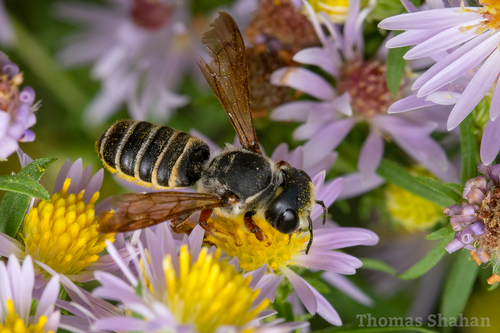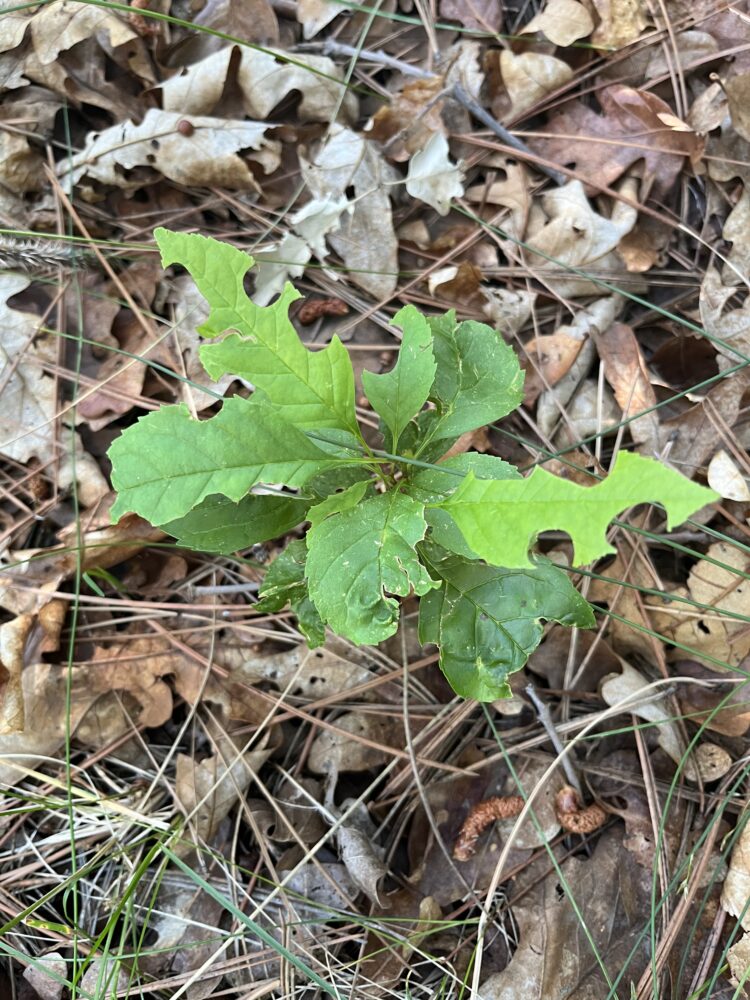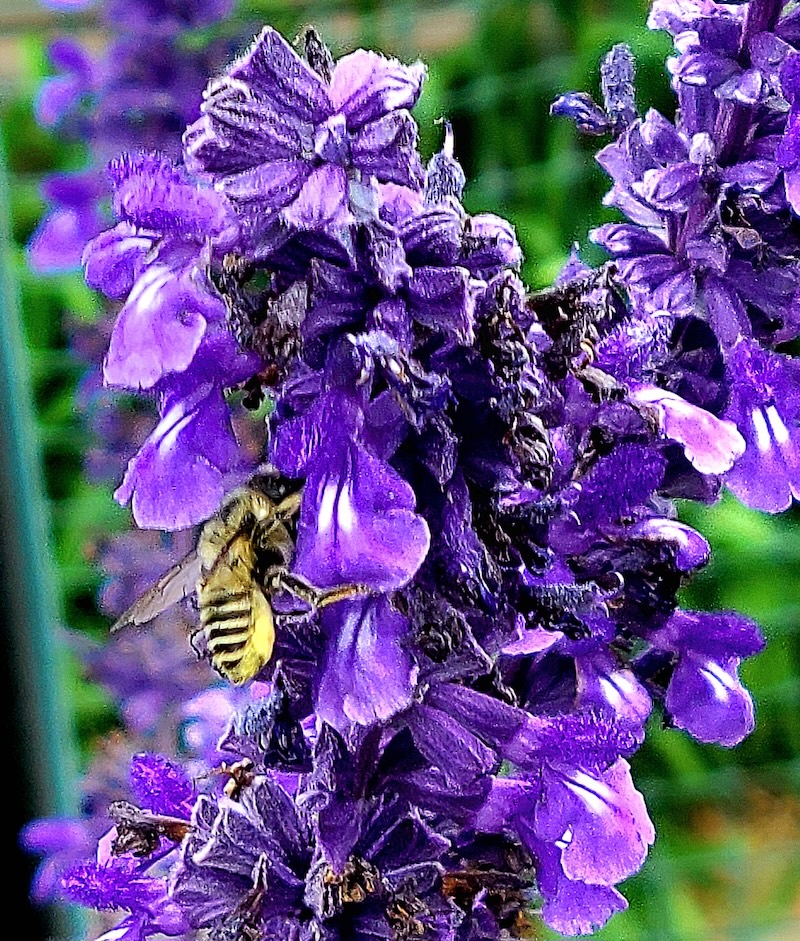Text by Craig Martin
Many of the bees reported in the Bee City iNaturalist Project for Los Alamos County are in the genus Megachile. The name means “large lipped” and comes from the oversized mandibles that are an important characteristic of the genus. Leafcutter bee is the common name for the genus Megachile.
In our area, these native bees are mid-sized bees with large eyes and rather long antennae. Their thorax is fuzzy, but their dominant feature is a hairy abdomen with alternating dark and light stripes that extend across the broad rear segment of their body. Some species have long orange hairs on the underside of the abdomen that stick out to the side and are visible from above. Females of all species carry their pollen on hairs under their abdomen instead of on their legs like most bees.

Although it is reasonably easy to identify a bee in the genus Megachile, it is very difficult to identify the exact species. The key characteristics distinguishing species are usually on the innermost leg segment or subtle differences on the mouth parts. In addition, over 100 species in this genus have been identified in the western United States. As a result, all records from Los Alamos County are identified only to genus.
Most species in the genus nest above ground in cavities, hollow plant stems, insect burrows, or in decomposing wood. They are often found in man-made bee nests. When she locates a suitable cavity, a female will find a leaf, chew a roughly circular hole in it, and bring the leaf cutting back into the nest. (Some species use flower petals instead of leaves for their nests.) Here she gnaws the edge of her leaf into a goo, which acts as glue as she presses the leaf cutting against the nest walls. Once she weaves several cuttings to form a sort of wallpaper lining the cavity, she deposits an egg and some pollen, then seals off end of the small chamber. She repeats these actions until the entire cavity is filled with many egg-and-pollen-filled chambers.

An interesting sidenote: In the Great Plains, where there is plenty of grass but few broad-leafed plants, Megachile bees are rare.
As a genus, Megachile bees are generalist species visiting a variety of flowers, but there is a preference for members of the sunflower family. In Los Alamos County, they have been observed on milkweeds, mints, penstemons, and particularly peas and sunflowers.
Look for Megachile species in Los Alamos throughout the summer. They are slow flyers and are easy to photograph. It’s a bonus if you spot one with a small leaf cutting in its mouth!


I have observed them repeatedly every year on the same patch of sweet peas growing in my front yard. Not anywhere else. I’m wondering if there’s a nest nearby. The sweet peas are growing in the spaces of a repurposed wooden pallet.